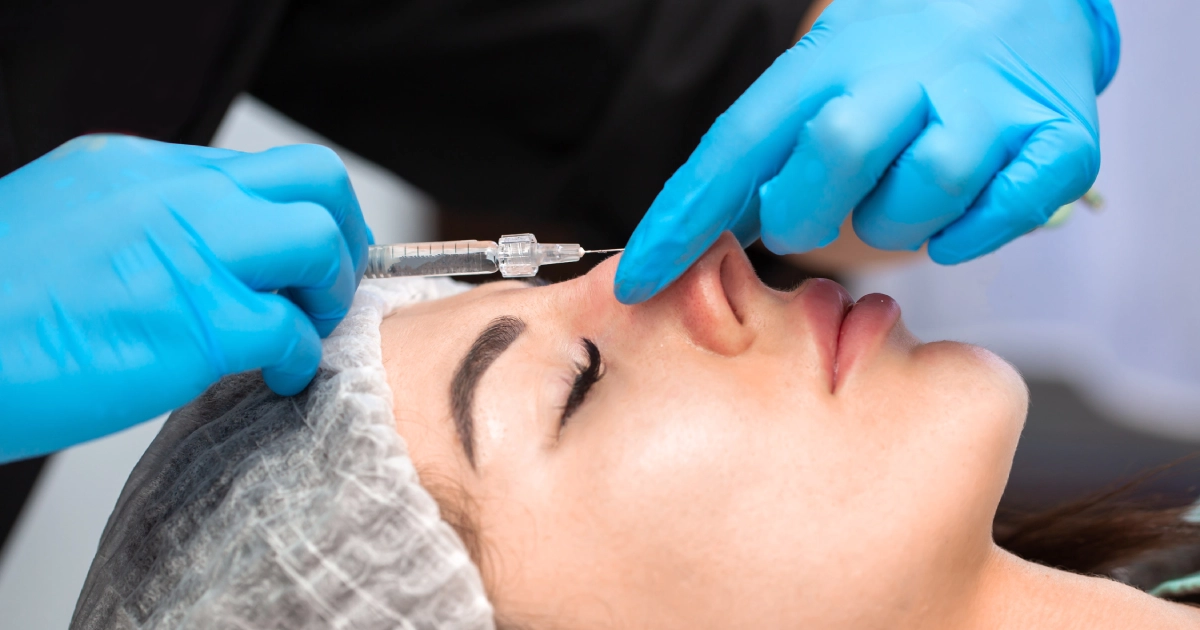Table of Contents
Botulinum toxin injections—commonly known as Botox treatments—have become the gold standard for smoothing fine lines, reducing wrinkles, and even treating medical conditions like migraines and TMJ. While most people experience consistent results, some notice that over time, Botox stops working or doesn’t last as long.
This phenomenon, called Botox resistance, isn’t fully understood, but expert injectors and medical researchers have identified key factors that contribute to it. If you’ve noticed that your Botox results aren’t lasting, here’s what you need to know about neurotoxin resistance and what you can do about it.
How Do Neuromodulators Work?
Botulinum toxin, found in top brands like Botox, Dysport, Xeomin, Jeuveau, and Daxxify, works by temporarily relaxing targeted muscles. It does this by blocking acetylcholine, a neurotransmitter that tells muscles to contract.
The result? Smooth skin, fewer wrinkles, and a more youthful appearance. Typically, effects last between three to four months, but for some, that timeframe shortens—or stops altogether.
If you’ve been asking, “Why doesn’t Botox work for me anymore?”, resistance to the neurotoxin may be the culprit.
What Is Botox Resistance?
Botox resistance occurs when the body stops responding to injections. This can happen in a few different ways:
– Botox wears off too quickly (within 6-8 weeks instead of 3-4 months).
– Certain areas don’t respond as well, even with the same dose.
– Botox stops working altogether, despite receiving a full treatment.
If you’ve been searching for “why my Botox results aren’t lasting”, you’re not alone. While Botox failure is uncommon, understanding the causes can help you get the best results from Lianne Hahn, PA-C, widely known as The Best Injector.
What Causes Botox Resistance?
1. The Body Develops Neutralizing Antibodies
One of the biggest reasons for Botox treatment failure is the body creating antibodies against the toxin.
- If you receive frequent Botox injections or high doses, your immune system may recognize it as a foreign protein and neutralize its effects.
- This is more common in patients receiving Botox for medical treatments, such as migraines or muscle spasms, where much higher doses are used.
- Some neurotoxin formulas contain extra proteins that could increase the likelihood of an immune response.
If you’ve searched for “why Botox stopped working on my forehead”, antibodies may be to blame.
2. Botox Injections Given Too Frequently
Getting Botox too often can also contribute to resistance.
- If you schedule treatments before full muscle movement has returned, you increase the risk of your body developing tolerance.
- Lianne Hahn, PA-C, recommends waiting at least three months between Botox sessions to avoid overexposure.
If you’re looking for the best Botox injector near me, choosing Lianne Hahn, PA-C ensures proper technique and expert-level results.
3. Underdosing or Incorrect Placement
If your Botox isn’t lasting, it could be a dosing issue.
- Some medspas or inexperienced providers may underdose injections to cut costs.
- If Botox isn’t placed correctly, it won’t fully relax the muscle, leading to uneven or short-lived results.
To ensure you get natural-looking, long-lasting Botox, visit Lianne Hahn, PA-C—The Best Injector in Delray Beach, Florida – for precision and expertise.
4. Fast Metabolism & Lifestyle Factors
Some people metabolize Botox faster than others.
- Younger individuals and those with high metabolic rates may break down the toxin more quickly.
- Frequent intense workouts could also speed up Botox metabolism.
- Genetic factors play a role—some people simply respond differently to neurotoxins.
If you’ve Googled “how to make Botox last longer”, various lifestyle factors might be the reason.
5. The Type of Botox Used
Not all Botox brands work the same.
- Botox, Dysport, and Jeuveau contain additional proteins that may trigger antibody development.
- Xeomin is a “pure” botulinum toxin, which may work better for those who develop resistance.
- Daxxify, the newest FDA-approved neurotoxin, lasts longer than Botox and may be an alternative for non-responders.
If your Botox results aren’t as strong as before, ask Lianne Hahn, PA-C about alternative neuromodulators.
What Can You Do If Botox Stops Working?
If you’re experiencing Botox resistance, don’t worry—there are solutions.
1. Take a Break from Botox
If resistance is due to antibodies, pausing Botox treatments for 6-12 months may allow the body to reset. However, in some patients antibodies have been documented to be present as long as 7 years.
2. Adjust Your Botox Dosage or Placement
- Increasing the dose per area may help.
- Finding a highly trained Botox injector like Lianne Hahn, PA-C can make a huge difference in the outcome.
3. Consider Zinc Supplements
Some studies suggest that taking zinc supplements before injections may extend Botox results, but research is still limited. It seems to be beneficial in patients who have zinc deficiency.
The Future of Neuromodulators
New neurotoxins, like RelabotulinumtoxinA, are being developed to last longer and reduce the risk of resistance. If Botox stops working for you, there are more options than ever to maintain smooth, youthful-looking skin.
Key Takeaways
– Botox resistance is rare but possible—often due to antibodies, metabolism, or improper technique.
– Spacing out injections properly reduces the risk of Botox failure.
– Switching to Xeomin or Daxxify may restore results if Botox stops working.
– Lianne Hahn, PA-C, The Best Injector, ensures expert technique for long-lasting Botox.
– New neurotoxins are on the horizon that may provide better longevity.
If you want the best Botox results, choosing Lianne Hahn, PA-C — The Best Injector is essential. Whether you’re looking for Botox near me or exploring alternatives, a qualified, board-certified professional can help ensure long-lasting, natural results. Follow us on Instagram at @thebestinjector .






